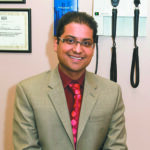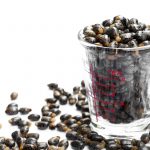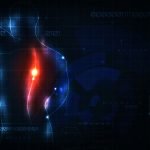Anti Aging: Wrinkle and Skin Slack Treatment
Michael Rahman, BSc, ND
My belief is that health is beauty and beauty is health. As an ND, I strive to marry natural medicine with cosmetic and anti-aging medicine. A comprehensive approach to anti-aging means not only assessing possible endocrine, metabolic or nutritional imbalances that contribute to aging, especially of the skin or connective tissue, but also providing effective and safe treatment strategies. This is done in the same manner as other medical interventions: through history, assessment, and physical and laboratory evaluation. As clinicians, we are able to address the main cosmetic aspects that patients may chiefly or concomitantly present with. Given the boom of cosmetic procedures and an increasingly technical anti-aging industry, patients have become well versed in the treatments available to them. Cosmetic procedures are suited to naturopathic practice because they are personalized, preventive, noninvasive and low-risk, and involve natural or naturally-derived substances.
Line and wrinkle formation is a well-known sign of skin aging, influenced by both intrinsic and extrinsic factors. Intrinsic factors include age, gender, genetic disposition and race. Biological changes attributed to these factors can also be termed chronological aging of the skin. Extrinsic factors include UV light, weather and climatic influences (known as photoaging), nutrition, tobacco use, and alcohol and drug abuse. Ultimately, skin aging also creates important physiological changes, such as a decrease in hydration and a breakdown of the skin barrier and, thus, immune function; slower cutaneous metabolic activity; and a decrease in activity of the sebaceous and sweat glands.
The cosmetic patient with skin concerns will basically have one or more of four issues to improve: color, tone, texture and/or tightening of the skin.
Problems of skin color, or dyschromia, may present as melasma, lentigo or telangiectasia. Usually these develop as a result of UV radiation, or are exacerbated by UV radiation. Effects on the melanocyte are alteration and migration of melanin to more superficial levels and the action of free radicals on the blood vessels. Problems with skin tone may be defined as a loss of radiance or uniformity. The most effective treatment for brown and red spots and loss of skin tone is the use of intense pulse light (IPL) therapy with the use of laser platform. IPL therapies may also be used to correct texture and tighten skin (depending on the wavelength of light or energy delivered to the skin). In this article, I will focus on the use of injectable therapy, radiofrequency (RF) and a technique called fractional resurfacing.
Pathophysiology of Aging Skin Leading to Collagen Deformation
Changes in the epidermis. The hydrolipidic layer diminishes as the stratum corneum reduces; horny cells and horny substances are atrophied. Melanocytes disintegrate or move closer to epidermal cells and finally lead to a spotted pigmentation of the skin. Germinative cells and the Langerhans cells become altered, ultimately resulting in atrophy of the epidermis.
Changes in the dermis. The dermis is a dense network of collagen fibers, providing the skin with tensile strength and resistance. Younger skin shows a more complex network of collagen fibers. With age, these begin to demonstrate a disorderly alignment, with loss of density and firmness, and a decrease in the elasticity.
The dermis consists of collagen and elastin, capillaries, lymphatics, nerves and immunocompetent cells. It is rich in glycosaminoglycans, which promote the ability of the collagen and elastin fibers to retain moisture. The amount and chemical composition of the intercellular substance changes, resulting in dehydration and a decrease in glycosaminoglycans. The net result is the diminishing of fundamental substance. Aging may also induce changes in the amount of fibroblasts, the cells responsible for reorganization and maintenance of the tensile components. The vascularity may also be negatively impacted by aging, thus reducing nutrient delivery and oxygenation to all cells of the tegumentary system.
Changes in the skin’s appearance are a net result of the aging process of the connective tissue and underlying fat atrophy.
Mesotherapy as a Delivery System to the Skin
Active dermatological and cosmetic ingredients can only act when they penetrate, at minimum, the outermost layer of the skin. The efficacy of topical products is often suboptimal, because transport into the skin is slow due to the resistance of the stratum corneum. When the outer horny layer is absent, there is an increase in permeability; most small, water-soluble non-electrolytes diffuse into the system 1,000 times more rapidly.
Mesotherapy stimulates organs derived from the mesoderm by superficially (no more than 4mm) injecting into the dermis. This is achieved with the use of specialty needles. The skin is injected with homeopathic agents or neutraceuticals. For wrinkle treatment, injectables used can include hyaluronic acid, glycosaminoglycans, vitamin C, dimethylaminoethanol (DMAE), lipoic acid, B vitamins, silicea and Ginkgo biloba, among others. In my practice, I use a combination of nutraceuticals and complex homeopathic remedies, including sarcodes and Krebs cycle intermediates from Germany and Italy.
The use of microdose injections also provides physical stimulation by the trauma of puncture to stimulate fibroblastic activity and vascular and immune components.
Overall benefits of mesotherapy include:
- Synthesis of glycosaminoglycans and proteoglycans
- Skin hydration
- Collagen production
- Destruction of free radicals
- Tissue regeneration.
- Stimulation of vascular and lymphatic systems
Technologies
A brief summary of several techniques follows. To help understand the combination approach I use with patients, I will discuss RF, laser and connective tissue massage devices.
RF. RF is the use of electromagnetic waves that stimulate bioelectric tissue activity, accelerating ion motion with a targeted and efficacious thermal effect.
Developments in this technology have made possible the selective delivery of energy to deep dermal and subdermal layers while protecting the epidermis, especially by the use of bipolar headpieces. In contrast, laser (IPL) energy tends to scatter or absorb in the upper layers of the skin, making it difficult to deliver sufficient energy to the deep layers without damaging the skin’s surface. The effect of RF energy is to encourage skin tightening by causing collagen contraction and remodeling by the breaking or reconstituting of disulfide bonds. Other effects include vasodilatation and hyperemia for increased cellular oxygenation, and metabolism and fibroblastic stimulation.
Laser. The use of laser has become increasingly popular in cosmetic care; gone are the days of high energy emitting devices with invasive, potentially harmful effects. The devices of today are non-ablative light emitting devices, many of which are multifunction and multiplatform. The device I use in my practice has the capacity to remove hair; treat vascular and pigmented lesions; and use near infrared for skin tightening, acne treatments and fractional resurfacing of the skin.
These devices emit different wavelengths of light, which have different targets. For example, red light (650nm) targets the hair follicle; and the yellow light spectrum of 540nm and 570nm targets the vascular (via oxyhemoglobin) and pigmented (melanin) lesions.
Fractional or pixel treatments utilize a headpiece emitting 2940nm wavelengths. Its target is water, and it impacts in a pixel-like pattern, where only a small fraction of the skin receives the laser light. The healthy cells in the untouched spots promote rapid healing of the entire area. It is an especially valuable treatment for fine lines and creases, including the perioral and periorbital lines. This allows for the skin, in essence, to be traumatized and stimulated to regenerate in a controlled manner, without much discomfort or social downtime. Another advantage to this procedure, unlike deeper ablative laser treatments or chemical peels, is that the patient can easily camouflage the skin.
Connective tissue massage. I believe that connective tissue massage is the single most important treatment that can be done manually or aided by technology. Machines can be described as vacuum-like in their action, essentially picking up the tissue, creating increased vascular and lymphatic drainage, and initiating the detoxification mechanisms of the skin. The massage component essentially allows us to target most goals of our wrinkle therapy as listed in the accompanying text (on Page XX).
Treatment Strategy
My general approach to wrinkle and skin slack treatment includes a full medical history and lab workup to ensure that nutritional, biochemical and hormonal statuses are in balance. A typical prescription can include: antioxidants for skin health, such as vitamins C and E, lipoic acid, glutathione; and nutraceuticals such as fish oils and glutamine, to name just a few. Dietary and lifestyle factors are also assessed. My combined therapy is as follows (in order of usage), though personalized for each patient:
For facial treatments:
- Connective tissue massage
- Mesotherapy
- IPL treatments for color and tone
- Radiofrequency or near infrared for tightening
- Pixel treatment for textural influence
Proposed Frequency:
- 4-6 treatments carried out once a week
- 2 treatments once every 3 weeks
- 2 treatments once a month for 2 months
Why Skin Aging Occurs: Theories
- Programmatic: The programming of cellular destruction and death lies in the genetic code.
- Degenerative: Aging is especially influenced by photoaging, and exogenous and endogenous factors, such as hormonal fluctuations and immunological factors that together create metabolic failure and alterations in molecular syntheses. Free radical formation, especially subsequent to UV radiation exposure, causes a drastic reduction in the storage of elastin and collagen by possibly affecting post-transcription mechanisms.
Factors Responsible for Wrinkle Development
- Metabolic factors, such as hormonal deficiencies, collagen disorders
- Ultraviolet rays
- Tobacco (diminishes skin oxygenation)
- Inadequate diet (especially lack of adequate quality protein and essential fats)
- Excess alcohol
- Loss of teeth/improper chewing
- Environmental dryness
- Absence of cosmetic skin care (important for proper hydration)
- Abrupt weight loss
- Gravity (especially affects eyelids and neck)
- Sleep lines (caused by prolonged facial expression during sleep)
Types of Wrinkles
Expression wrinkles. These occur because the skin does not have muscle structure; the underlying muscle contraction determines its shape. Over time, loss of the underlying tissue tone and elasticity prohibits the skin from being able to relax, so the initial wrinkles in the skin worsen.
This may be much more evident at these locations:
- External angle of the eyes (crow’s feet)
- Nasolabial folds
- Forehead
- Glabellar area
- Perioral lines
- Cheeks (vertical lines)
Gravitational wrinkles. These wrinkles are accentuated due to loss of fatty tissue, bone or teeth.
Developmental Phases of Wrinkles
The etiopathogenic process:
- Phase 1: A reduced supply of O2 and nutrients to the dermis due to congestion in the interstitial spaces or matrix, caused by catabolites of cellular damage (due to chronoaging) and by undrained toxins caused by free radical photoaging, causes a slowing of intracellular metabolisms and subsequent enzymatic damage
- Phase 2: Subsequent metabolic distress creates a decrease in fibroblastic activity, thus creating a dramatic reduction in collagen and elastin synthesis.
- Phase 3: There is an overall weakening of connective tissue, especially in the deeper dermal levels (reticular dermis) and ensuing dehydration, due to the loss glycosaminoglycans. There is further vascular compromise at this level, and lymphatic drainage is slowed.
Wrinkle Treatment Goals
Our therapeutic endpoint for wrinkle treatment must take into consideration all of these elements and treat the wrinkle for what it is: a primary metabolic alteration as a result of cellular aging:
- Correction of cellular deficiencies and enzymatic stimulation
- Drainage of connective tissue (matrix)
- Stimulation and support for lymphatic and circulatory systems
- Structural or dermal strengthening and stimulation of neosynthesis (trophic stimulation)
 Michael Rahman, BSC, ND graduated from CCNM and has been practicing in Canada for more than 12 years, with clinics in Toronto and Durham. His practice focuses on biological medicine and its treatment of chronic diseases, from fibromyalgia to cancer, and healthy age management. Dr. Rahman’s practice interest also includes naturopathic cosmetic care, blending naturopathic medicine with cosmetic approaches and technology to enhance health and beauty. He lectures and instructs NDs from across Canada and the U.S. on naturopathic care, natural noninvasive cosmetic care and advanced homotoxicological approaches to disease. Dr. Rahman is founder and director of the Pinewood Institute for the Advancement of Natural Medicine, a facility dedicated to providing the highest quality mesotherapy and cosmetic techniques and technologies to health care professionals.
Michael Rahman, BSC, ND graduated from CCNM and has been practicing in Canada for more than 12 years, with clinics in Toronto and Durham. His practice focuses on biological medicine and its treatment of chronic diseases, from fibromyalgia to cancer, and healthy age management. Dr. Rahman’s practice interest also includes naturopathic cosmetic care, blending naturopathic medicine with cosmetic approaches and technology to enhance health and beauty. He lectures and instructs NDs from across Canada and the U.S. on naturopathic care, natural noninvasive cosmetic care and advanced homotoxicological approaches to disease. Dr. Rahman is founder and director of the Pinewood Institute for the Advancement of Natural Medicine, a facility dedicated to providing the highest quality mesotherapy and cosmetic techniques and technologies to health care professionals.
References
Braun M: Treatments with her in mind, what is it that women want, Canadian Medical Spas Summer; 4(2):18-19, 2007.
De Bellis M, Frasca N: Treatment of wrinkles and skin slaking using the intradermal injection of a complex homeopathic remedy (MADE). Results of a cohort clinical study on 681 patients, La Medicina Biologica June;7-19, 2004.
Den Jean D: My experiment of assumption of responsibility nonsurgical of cutaneous ageing with the Harmony platform, Surginews – Aesthetic Medicine and Cosmetic Surgery News (5):26, 2007.
Torres N: Presentation for Pan American anti aging congress, Montreal, PQ, September, 2008.
Maya Beauty Engineering: Therma skin. Available at www.mayabeauty.com/therma_skin.php.










